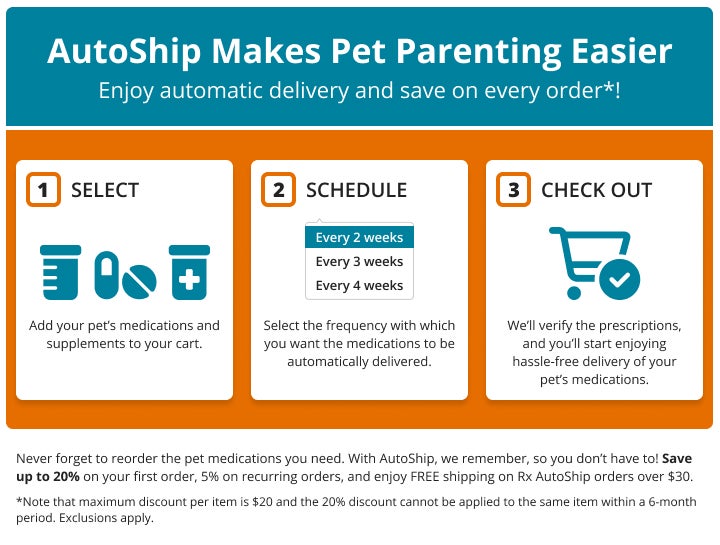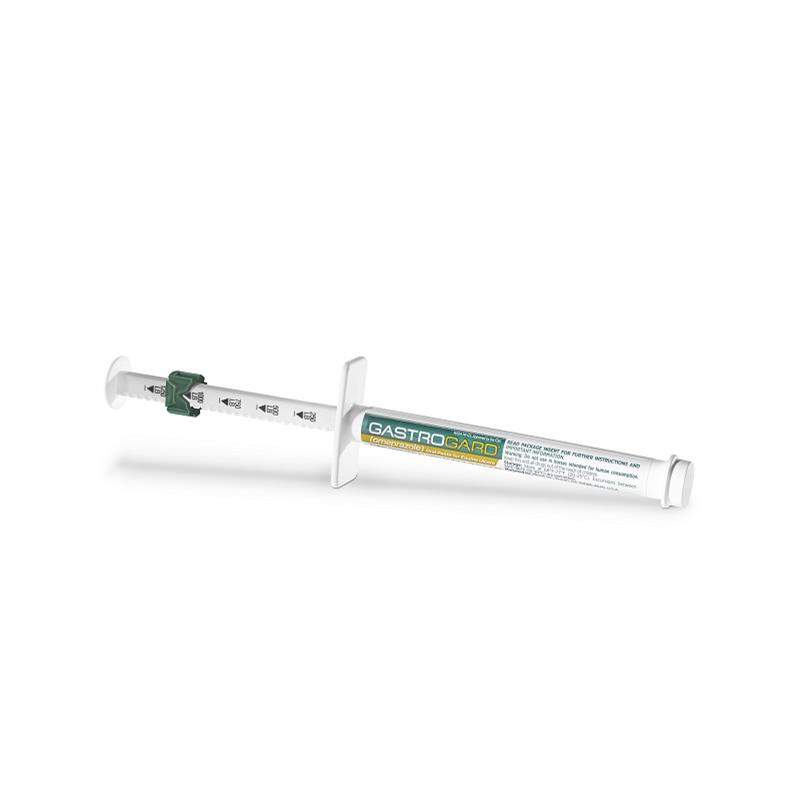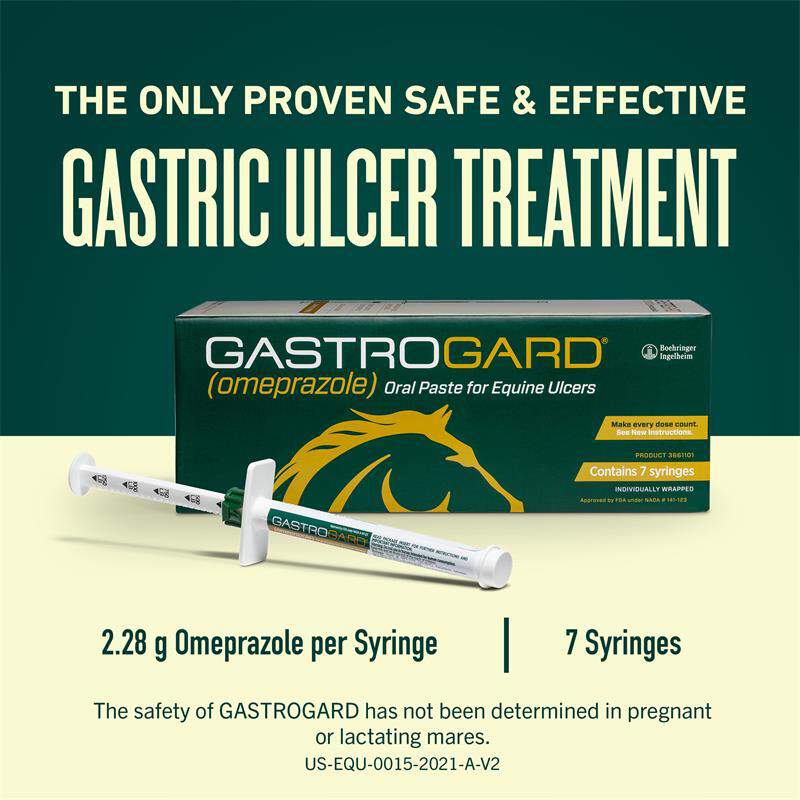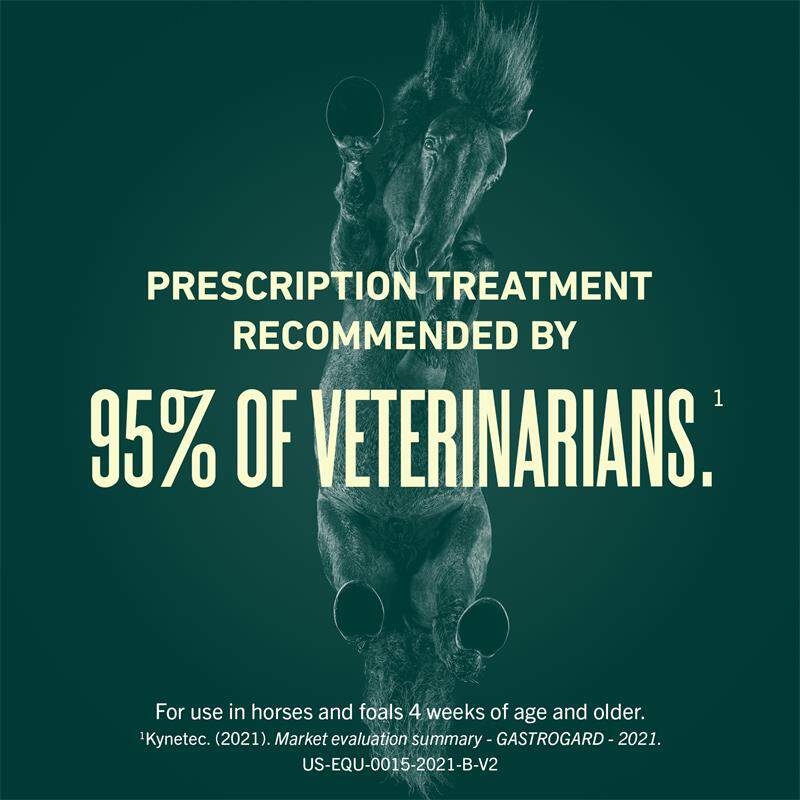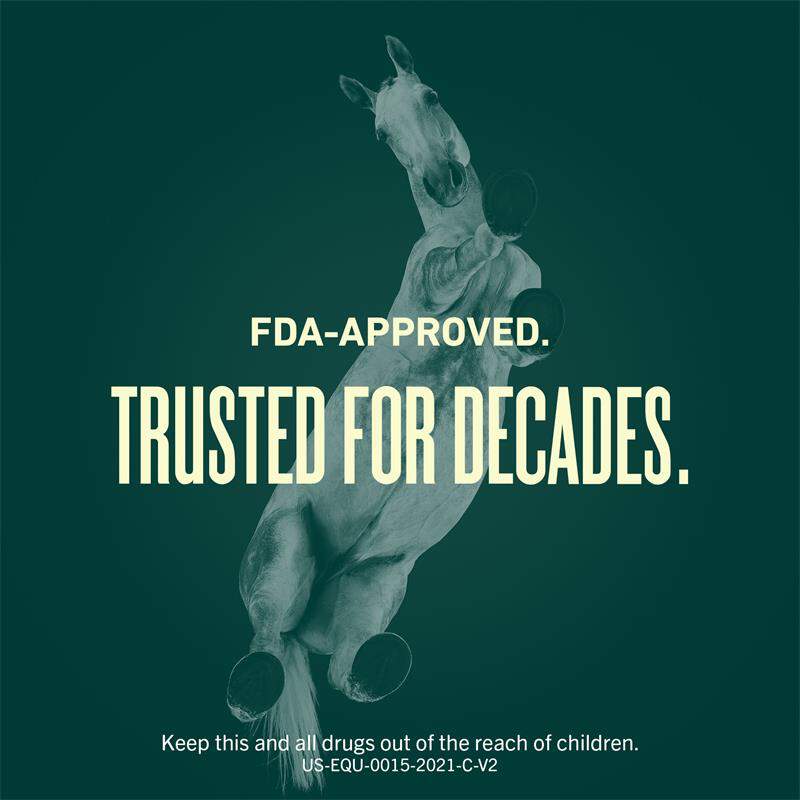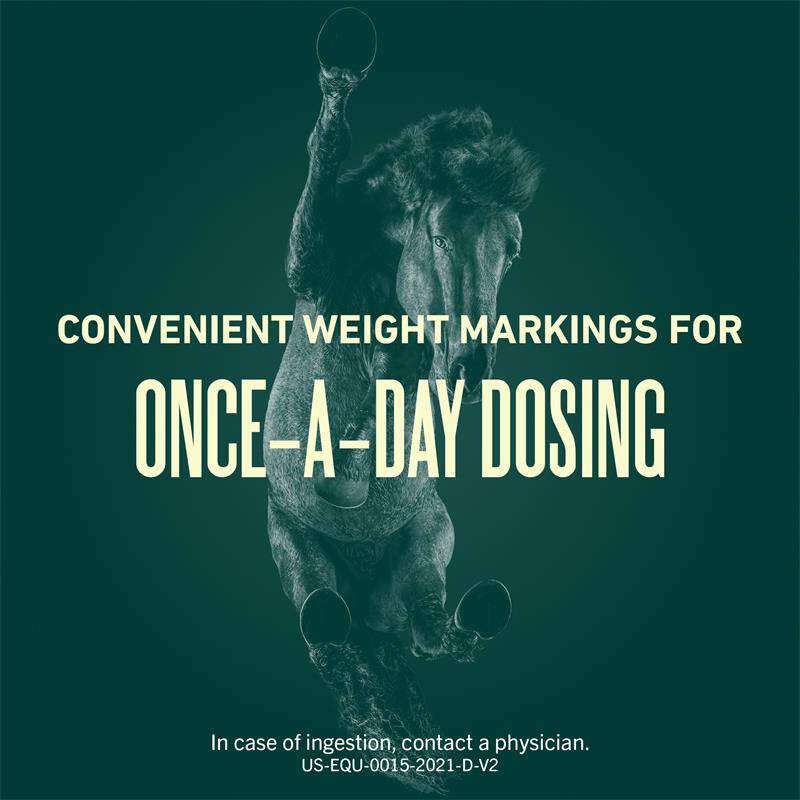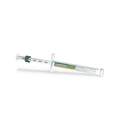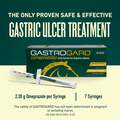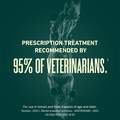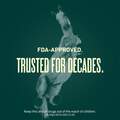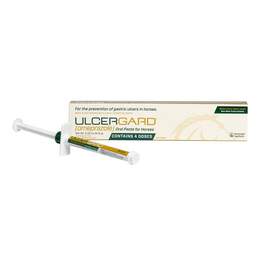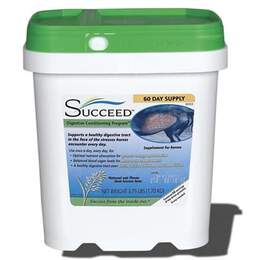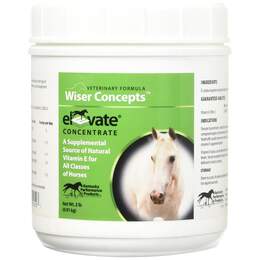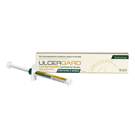

1 of 6
Click on image to open expanded view
Item No.
10042
GastroGard Rx
AutoShip & Save 20%
- Save on your Autoship
- Hassle-free: Easily Skip or Change Shipment Dates.
- Commitment-free: Cancel anytime
- Free Shipping.
With AutoShip, we remember so you don’t have to! Learn more
GastroGard Description
There are several possible causes of equine stomach ulcers, including travel, training, competing, limited turnout, grazing, or even just a simple change in routine.1 lf your horse has been diagnosed with stomach ulcers, GASTROGARD® (omeprazole) can help with the healing process. The unique omeprazole paste formulation protects the omeprazole as it works through the system for adequate absorption. GASTROGARD® is the only equine ulcer treatment that is approved by the FDA and proven to be safe and effective.
IMPORTANT SAFETY INFORMATION
The safety of GASTROGARD® (omeprazole) paste has not been determined in pregnant or lactating mares. For use in horses and foals 4 weeks of age and older. Keep this and all drugs out of the reach of children. In case of ingestion, contact a physician. Caution: Federal (USA) law restricts this drug to use by or on the order of a licensed veterinarian. For additional information, please refer to the full prescribing information.
1. Nieto JE, Diagnosing and Treating Gastric Ulcers in Horses, Center for Equine Health Horse Report, UC Davis, 2012
What is GastroGard?
GASTROGARD® is for the treatment and prevention of recurrence of gastric ulcers in horses and foals 4 weeks of age and older.
Which animals/pets is GastroGard for?
For use in foals (4 weeks old and up; 600 pounds or more) and horses.
GastroGard uses
• Healed or helped with significant improvement in equine stomach ulcers by up to 99%1
• Healed equine stomach ulcers that compounded omeprazole did not1
• Product is for use in horses and foals 4 weeks of age and older
• One dose lasts up to 24 hours making it easy to administer
• Palatable and easy-to-use pre-filled dosing syringe
1. Nieto JE, et al. Comparison of paste and suspension formulations of omeprazole
What does GastroGard do?
GASTROGARD® (omeprazole) is a proton pump inhibitor that regulates the final step in hydrogen ion production and blocks gastric acid secretion regardless of the stimuli. The drug works to reduce the amount of acid in the horse’s stomach, thus increasing the gastric pH to foster healing of ulcers. GASTROGARD incorporates a special paste formulation to protect the omeprazole from stomach acid as it travels to the small intestine to be absorbed.
GastroGard side effects
No known side effects
GastroGard ingredients
Omeprazole
GastroGard overdose: What to do?
Contact your closest emergency pet hospital.
What to know before using GastroGard
The safety of GASTROGARD® (omeprazole) Paste has not been determined in pregnant or lactating mares. The safety of GASTROGARD® (omeprazole) paste has not been determined in pregnant or lactating mares. For use in horses and foals 4 weeks of age and older. Keep this and all drugs out of the reach of children. In case of ingestion, contact a physician. Caution: Federal (USA) law restricts this drug to use by or on the order of a licensed veterinarian. For additional information, please refer to the full prescribing information.
How is GastroGard sold?
GastroGard® (omeprazole) Paste for horses contains 37% omeprazole and is available in an adjustable-dose syringe. Each syringe contains 2.28g of omeprazole. Syringes are calibrated according to body weight and are sold in individual 6 g tube.
Manufacturer
Boehringer Ingelheim
Tips for using GastroGard
A gastroscopy should be performed by a licensed veterinarian to diagnose gastric ulcers prior to starting on this medication.
Overview
For treatment of equine gastric ulcers, GASTROGARD® (omeprazole) should be administered orally once-a day for 4 weeks at the recommended dosage of 1.8 mg omeprazole/lb body weight (4 mg/kg). For the prevention of recurrence of gastric ulcers, continue treatment for at least an additional 4 weeks by administering GASTROGARD at the recommended daily maintenance dose of 0.9 mg/lb (2 mg/kg). GASTROGARD is recommended for use in horses and foals 4 weeks of age and older. The contents of one syringe will dose a 1250 lb (568 kg) horse at the rate of 1.8 mg omeprazole/lb body weight (4 mg/kg). For treatment of gastric ulcers, each weight marking on the syringe plunger will deliver sufficient omeprazole to treat 250 lb (114 kg) body weight. For prevention of recurrence of gastric ulcers, each weight marking will deliver sufficient omeprazole to dose 500 lb (227 kg) body weight. To deliver GASTROGARD at the treatment dose rate of 1.8 mg omeprazole/lb body weight (4 mg/kg), set the syringe plunger to the appropriate weight marking according to the horse’s weight in pounds.
To deliver GASTROGARD at the dose rate of 0.9 mg/lb (2 mg/kg) to prevent recurrence of ulcers, set the syringe plunger to the weight marking corresponding to half of the horse’s weight in pounds.
To set the syringe plunger:
1) While holding plunger, turn the knurled ring on the plunger ¼ turn to the left and slide the knurled ring along the plunger shaft so that the side nearest the barrel is at the appropriate weight marking, aligning the arrows on the ring and plunger.
2) Lock the ring in place by making ¼ turn to the right. Ensure it is locked. Make sure the horse’s mouth contains no feed. Remove the cover from the tip of the syringe, and insert the syringe into the horse’s mouth at the interdental space. Depress the plunger until stopped by the knurled ring. The dose should be deposited on the back of the tongue or deep into the cheek pouch. Care should be taken to ensure that the horse consumes the complete dose. Treated animals should be observed briefly after administration to ensure that part of the dose is not lost or rejected. If any of the dose is lost, re-dosing is recommended. If, after dosing, the syringe is not completely empty, it may be reused on following days until emptied. Replace the cap after each use.
Main Ingredients
Omeprazole
 Ulcers may be one of the most common conditions a horse can develop, 60 to 90 percent of show and race horses will develop the illness. And horses with a more nervous disposition are bound to have ulcers compared to a calmer and easy going horse. Because there are various causes to equine gastric ulcers we may want to start to understand a little more of how a horse digestive system may work. We as humans stimulate what is called hydrochloric acid when we eat; this is found in our gastric juices to help aid digestion and protect the stomach against the effects of enzymes and acid. The same production is found in horses but unlike humans they do not just develop hydrochloric acid when they eat, but it is constantly being produced. If a horse does not eat, acid builds up in the stomach which will start to irritate the stomach eventually leading to more serious problems.
Ulcers may be one of the most common conditions a horse can develop, 60 to 90 percent of show and race horses will develop the illness. And horses with a more nervous disposition are bound to have ulcers compared to a calmer and easy going horse. Because there are various causes to equine gastric ulcers we may want to start to understand a little more of how a horse digestive system may work. We as humans stimulate what is called hydrochloric acid when we eat; this is found in our gastric juices to help aid digestion and protect the stomach against the effects of enzymes and acid. The same production is found in horses but unlike humans they do not just develop hydrochloric acid when they eat, but it is constantly being produced. If a horse does not eat, acid builds up in the stomach which will start to irritate the stomach eventually leading to more serious problems.We can start to understand that frequent small meals are required in order to keep the stomach from being empty and causing a less damaging effect on the horses stomach. Such feedings of roughage, the amount and types can also play a role in preventing the increase of stomach acid. The horse’s chewing produces more saliva and by the horse swallowing the saliva helps neutralize stomach acid. Also certain types of medications that may increase the risk of ulcers may be those containing NSAIDS anti-inflammatory or any other medication that may block the production of prostaglandin E2 also known as PgE2 which is a chemical that decreases the acid production therefore when there is a low amount of PgE2 levels in the stomach there is a higher level of acid which lead to ulcers developing.
You may want to look out for symptoms in order to take the right action towards treating equine gastric ulcers. Symptoms vary between foals and a adult horse. The following symptoms may be a red flag of a problem
- CHANGE IN EATING BEHAVIOR
- SENSITIVE AROUND THE STOMACH AREA
- CHANGE IN ATTITUDE
- COLIC EPISODES
- DIARRHEA
- TEETH GRINDING
- POOR HAIR COAT
- EXCESSIVE SALIVATION


